Casino Seven Luck en Seoul Dragon City (세븐럭카지노(서울드래곤시티점))
12.6Km 2023-07-21
Cheongpa-ro 20-gil 95, Yongsan-gu, Seúl
Altar Hwangudan (환구단)
12.6Km 2021-07-30
Sogong-ro 112, Jung-gu, Seúl
El Altar Hwangudan es uno de los altares donde se realizaban rituales sagrados. Los primeros se hicieron durante la dinastía Goryeo, a cargo del rey Seongjong, en el primer mes de 983 (2º año de su reinado), pero su realización se vio interrumpida en diversos períodos hasta que en 1456, ya en la dinastía Joseon, se retomaron estas prácticas. El Altar Hwangudan empezó a tener rituales 1457, pero en 1464 se abolieron nuevamente hasta 1897.
Paseo bajo la Luz de la Luna en el Palacio Changdeokgung (창덕궁 달빛기행)
12.6Km 2025-10-23
Yulgok-ro 99, Jongno-gu, Seúl.
1522-2295
Construido en un principio como una residencia real, el palacio Changdeokgung se convirtió en el principal lugar de gobierno durante la dinastía Joseon después de que el palacio Gyeongbokgung fuese destruido durante la invasión japonesa del siglo XVI. Además de su relevancia política, el palacio es reconocido por su arquitectura y su bello entorno natural. En 1997 la Unesco designó al palacio Changdeokgung como Patrimonio Cultural de la Humanidad. Como parte del proyecto de creación de nuevos espacios, el Paseo Bajo la Luz de la Luna del Palacio Changdeokgung ofrece una oportunidad única de presenciar la belleza de los palacios coreanos. Este recorrido comienza en la puerta Donhwamun y continúa durante unas dos horas a través de los pabellones Injeongjeon y Nakseonjae, y el Jardín Huwon.
Korea Grand Sale (코리아그랜드세일)
12.6Km 2024-12-16
Insadong 5-gil 29, Jongno-gu, Seúl
070-7787-4242
Korea Grand Sale es un megaevento de compras organizado por el Ministerio de Cultura, Deporte y Turismo de Corea para ofrecer a los turistas extranjeros beneficios en la adquisición de vuelos, alojamiento, belleza, entretenimiento, comidas, actividades y mucho más. Este megaevento de compras y turismo se lleva adelante en diversos establecimientos por todo el país, tanto en tiendas físicas como en tiendas en línea. Consultar detalles en el sitio web oficial.
Isae (이새)
12.6Km 2024-02-21
Insadong-gil 30-1, Jongno-gu, Seúl
Tienda de Suvenires Coreanos en Insa-dong (한국관광명품점(인사동))
12.6Km 2024-02-19
Insadong 5-gil 14, Jongno-gu, Seúl
Insa-dong Antique Art Street (인사동 고미술거리)
12.6Km 2025-08-04
29, Insadong-gil, Jongno-gu, Seoul
As of today, there are approximately 70 shops in the Insa-dong area that sell antique arts. Some of the products they sell include antique artworks, porcelains, woodcrafts, and metalwork. Visitors may even find rare and valuable products such as earthenware from the Silla period or white porcelain used in the Joseon dynasty. Each shop is a specialty store, authorized to sell product types that are of their expertise, ranging from antique furniture and traditional artworks to handcrafted items.
HiKR Ground (하이커 그라운드)
12.6Km 2025-09-01
Cheonggyecheon-ro 40, Jung-gu, Seúl
En el piso 1 encontramos el “HiKR Wall”, una larga pared multimedia en la que se pueden apreciar diversas expresiones de arte multimedial, el Centro de Información de Turismo Médico, y también están en exposición la obra Sindosisansudo, del artista de multimedios Leenam Lee, y videos relacionados con el turismo en Corea enviados en forma pública por fans del Hallyu de todo el mundo. En el piso 2, los visitantes pueden hacer sus propios videos musicales de K-Pop usando el XR Live Studio. Cerca del ventanal que da al arroyo Cheonggyecheon encontramos la impresionante obra artística North Wall, que es una instalación del artista Suh Do-ho. Y en los pisos 3 y 4, los visitantes pueden sumergirse en el turismo local de Corea a través de diversas expresiones artísticas, actividades y exposiciones.
[Aviso de días de cierre y suspensión de programas]
Debido a obras de refacción en el HiKR Ground, todos los pisos quedarán cerrados como se detalla a continuación:
- Días de cierre: 1, 2, 3, 4 y 15 de septiembre de 2025.
- El mostrador de información, que opera todo el año, también estará cerrado durante este período.
- El Café Knotted del piso 5 abre con normalidad.
- Del 1 al 15 de septiembre, todos los programas están suspendidos debido a que el espacio tendrá un uso aparte (incluyendo programas regulares, programas interactivos y visitas guiadas).
- Desde el 5 de septiembre se celebrará el Festival de la Cultura de los Juegos (Game Culture Festival) en el HiKR Ground. Todos los visitantes están invitados a participar.
WeRide (위라이드)
12.6Km 2023-08-02
Cheonggyecheon-ro 40, Jung-gu, Seúl
Con los guías turísticos certificados de WeRide, los viajeros pueden experimentar recuerdos inolvidables al andar en bicicleta eléctrica por atracciones escondidas en todo Seúl. "La mejor manera de recorrer Seúl" es el lema de la compañía. El recorrido dura 2 horas y 30 minutos, y los participantes pueden recorrer la ciudad de manera segura con un guía profesional. La diversión de andar en bicicleta eléctrica se suma al atractivo de escuchar las historias del guía sobre la cultura coreana. Para quienes tengan dificultades con la bicicleta, también hay calesas eléctricas. Además, se alquilan bicicletas para ciclistas que quieran viajar por Corea.
Puerta Sungnyemun (Puerta Namdaemun) (숭례문)
12.6Km 2025-05-23
Sejong-daero 40, Jung-gu, Seúl
La puerta Namdaemun, cuyo nombre oficial es Sungnyemun, es un Tesoro Nacional de Corea. Tiene una entrada con forma de arco en el centro de una plataforma levantada de piedras. Sobre la misma, se elevan los pilares y el techo dividiendo al portal en nivel superior e inferior. En los laterales Este y Oeste, tiene abiertas puertas para entrar y salir.
El césped verde que rodea a la plataforma muestra las huellas de una antigua fortaleza. Cuando el monarca fundador de la dinastía Joseon, Lee Seong-Gye (que reinó de 1335 a 1408), hizo construir la ciudad capital, creía que en caso de incendio, el fuego alcanzaría el palacio Gyeongbokgung como así también el interior de la capital porque el monte Gwanaksan de Seúl tiene la figura del fuego de acuerdo a los principios de geománticos del “feng-shui”. Por ello, el letrero de la puerta Sungnyemun fue escrito en sentido vertical para proteger a la ciudad del incendio, porque los caracteres chinos escritos en forma horizontal se semejan a la imagen del fuego. La ideografía del letrero de Sungnyemun es solemne, elegante y llena de fuerza, pero a la vez, prolija.
La ideografía es famosa por ser de puño y letra del príncipe Yangnyeongdaegun (que reinó de 1394 a 1462), el primogénito de Taejong (1367-1422) de la dinastía Joseon. Por las noches, las luces de las lámparas de mercurio ubicadas debajo de la puerta añaden más belleza a su estética natural.

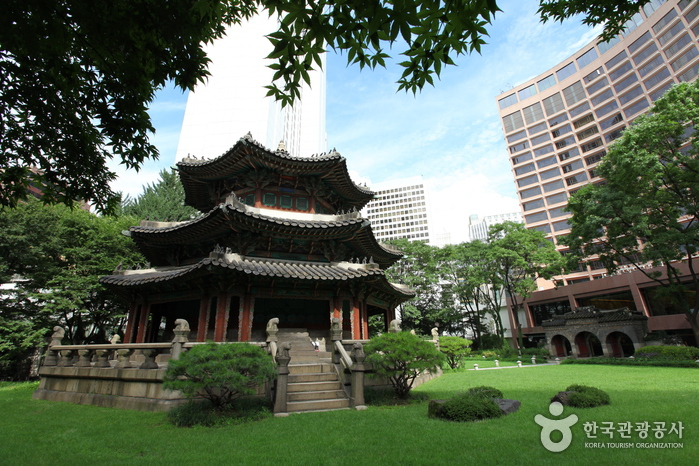
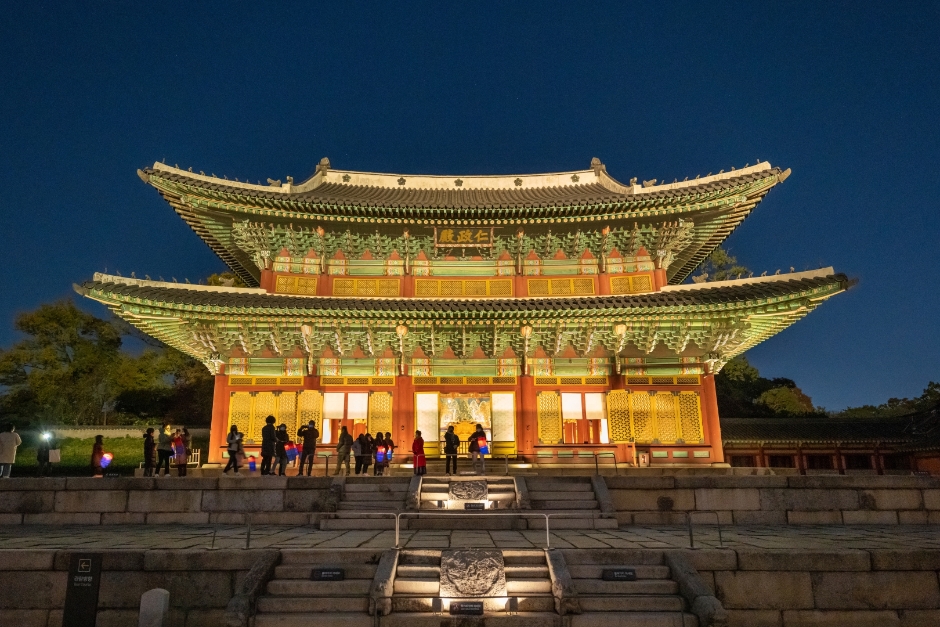
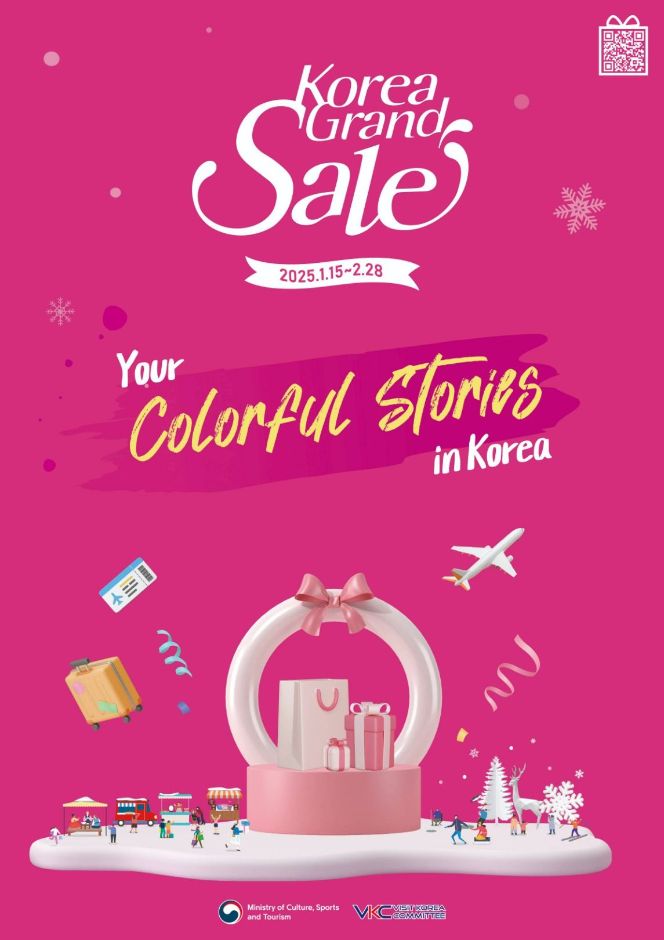
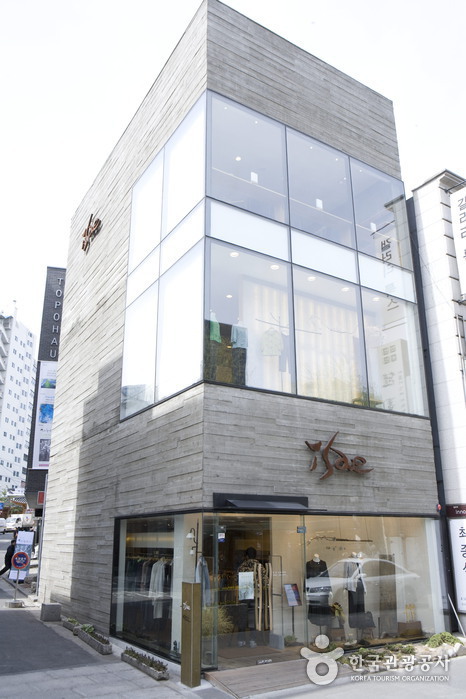
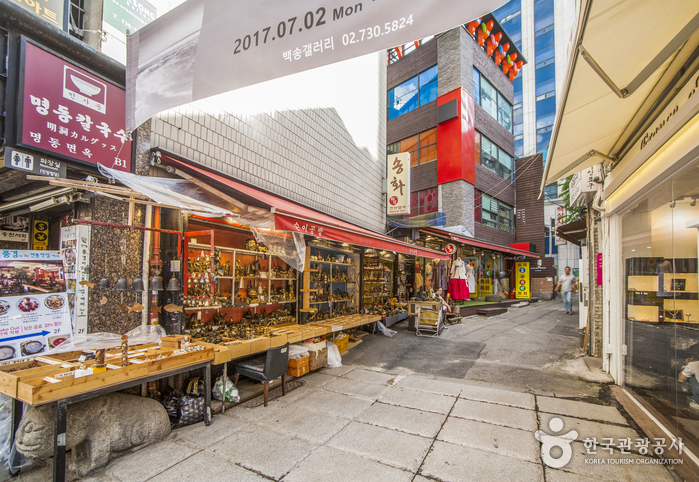
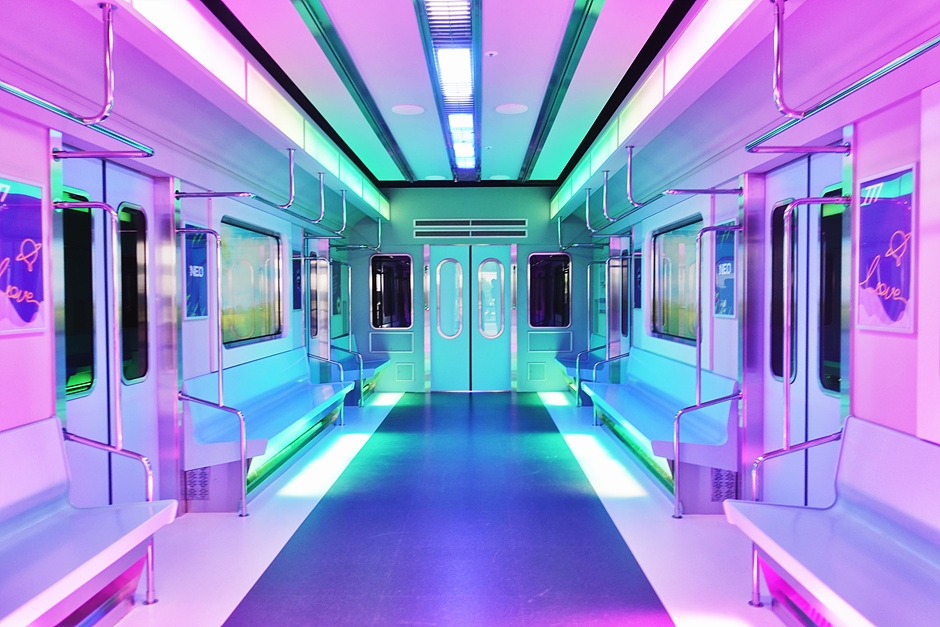
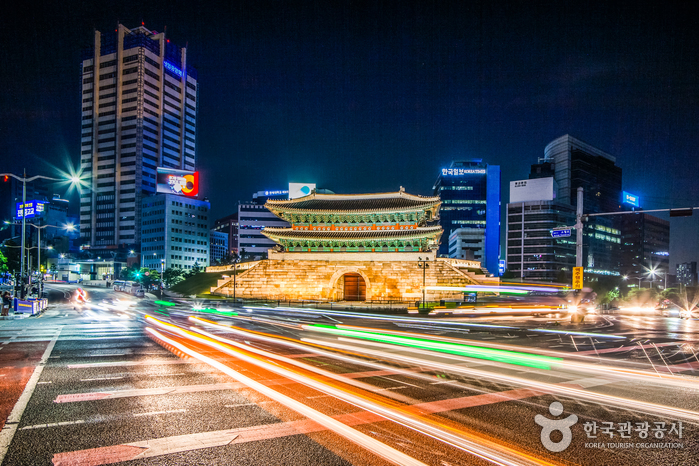
 Español
Español
 한국어
한국어 English
English 日本語
日本語 中文(简体)
中文(简体) Deutsch
Deutsch Français
Français Русский
Русский